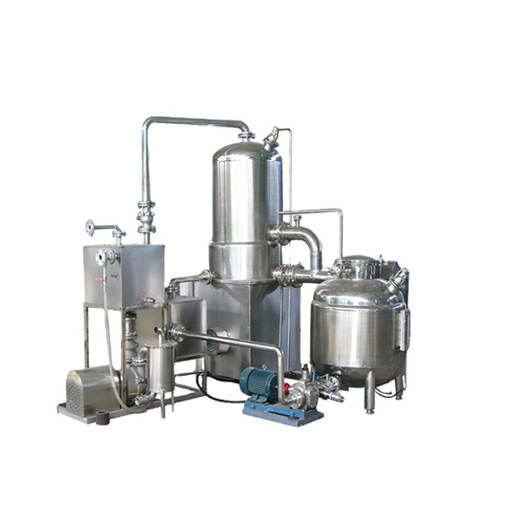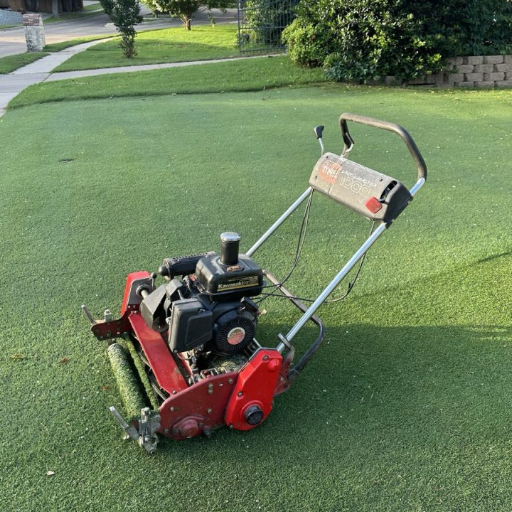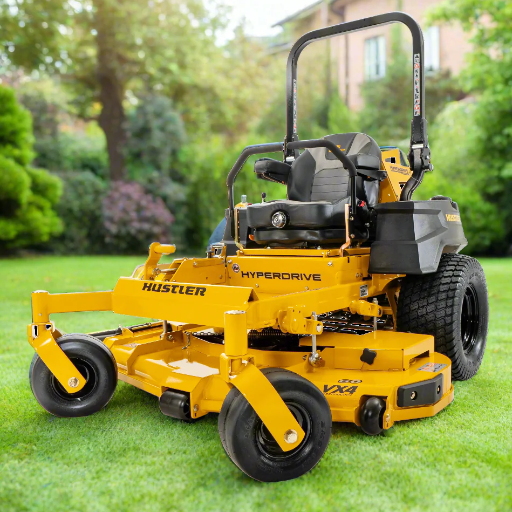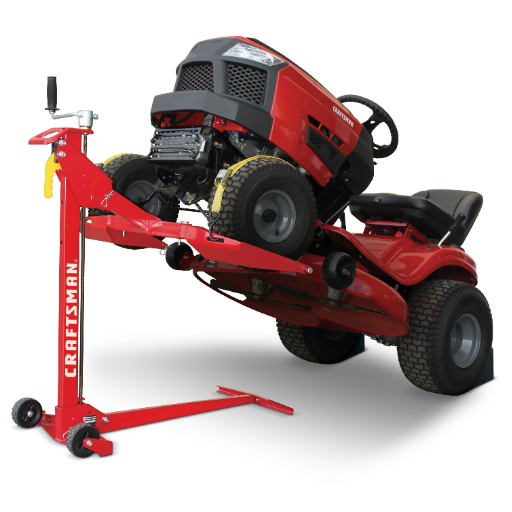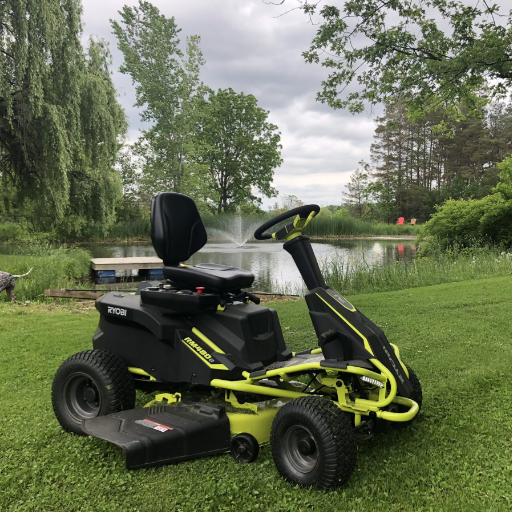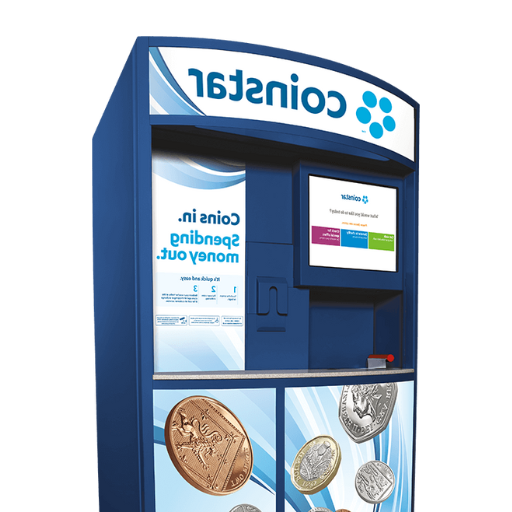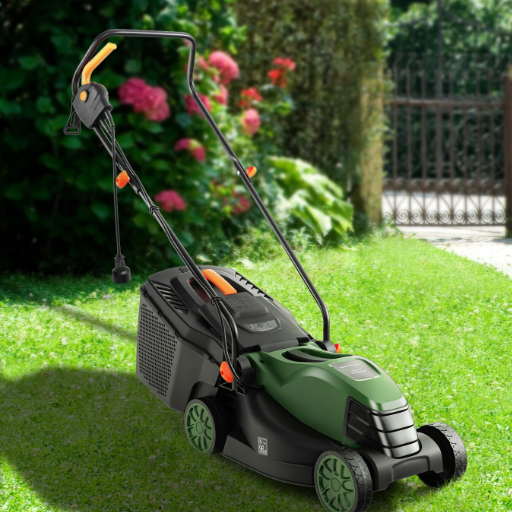Vacuum frying technology, which relates to the food technology within the snack foods category, has been accepted to be one of the most fundamental advancements. This method Is also revolutionary because instead of producing fatty oils snacks from normal frying skills, one fries the snacks inside a vacuum fryer machine, and voila!! Finally healthy snacks are available, with reduced fat % and more nutrients. This means that the readers of this guide will be well-versed in its subject, which in this case is vacuum fryer machines: how they work, what benefits they provide, and what changes food industries should expect when using them. This guide recommends how vacuum fryers should be used by analyzing the technical characteristics, benefits and areas of use of vacuum fryers in detail.
What is a vacuum fryer machine, and How Does it Work?

Insights into the process of Vacuum Frying
Fundamentally, residual moisture can be thought of as a subset of the frying process whereby food is fried at significantly reduced temperatures, as is the case with pans frying, which is normally carried out within the temperatures range of 80°C 120°C. This temperature reduction is accomplished by placing the food in a vacuum containment and removing the air within the containment. Under such conditions, the boiling point of water is lowered, hence increasing the rates of evaporation with regards to the moisture content in the food. This technique reduces undesirable loss of heat sensitive nutrients and the quantity of oil absorbed, leading to a healthier and crunchier snack. The less the food frying in the presence of oxygen, the less the foods are likely to be subjected to any oxidative reactions; therefore, their colors and flavors are intact.
Essential Parts that Make up a Vacuum Fryer Machine
Generally, a vacuum fryer machine contains several parts that interrelate to achieve the best frying conditions possible. These parts include:
- Vacuum Chamber: Also referred to as the target chamber, this is a sealed container into which food is inserted to be fried at a low atmospheric pressure. This chamber is crucial in ensuring the maintenance of a pressure vacuum, which makes it possible to employ low-temperature frying.
- Vacuum Pump: This is equipment that removes as much air as possible from the vacuum chamber to establish the low-pressure ambiance needed for vacuum frying. The vacuum pump’s performance is crucial as it will dictate the frying dynamics and the value of the final product.
- Frying Basket: A food frying basket is a perforated bowl in which the food is kept during the frying process. It uses only hot oil and allows the excess oil to drain off without resorting to any abnormal methods.
- Heating Element: This is the part that heats the oil to the specified temperature. The heating element is capable of precise temperature regulation, which is very important in vacuum frying.
- Oil Filtration System: This technique processes/recycles used frying oil so that food particles and other impurities can be filtered out and the quality of fried goods preserved.
- Condensation Unit: This unit aids in residual moisture removal by capturing and condensing steam from the food during frying. It also assists in retaining the vacuum configuration and moisture conditions within the chamber.
These components in combination, allow the vacuum fryer machine to produce healthy snacks with less oil content and the food’s original color, taste, and nutrients intact.
Important Differences of Vacuum Frying and the Conventional frying Technique
My investigation, based on what the top websites discussing this subject generally provide concerning the disparities present in vacuum frying compared to traditional frying methods, established several factors. First of all, it is worth mentioning that the process of vacuum frying is carried out at a significantly lower temperature in relation to the conventional frying process. Considering the instance of traditional frying where the average temperature is about 350 degrees Fahrenheit, 177 degrees Celsius, vacuum frying achieves desirable results with 248 degrees Fahrenheit 120 degrees Celsius and below. This low-temperature range is advantageous because it helps retain most of the foodstuff’s natural nutrients, color, and flavor.
Secondly, vacuum frying is performed under the reduced pressure environments, lowering water’s boiling point. This special arrangement reduces the chances of heat transfer in the oil, preventing oxidation of the edible oils, which translates to a product with reduced oil content and, at the same time, improved quality. However, conventional frying takes place in open surrounded environments, leading to higher fat uptake and possible oxidative destruction of the active nutritional components in the foods.
Lastly, the focus is turned to web-based sources that stand out. Vacuum frying also enhances the shelf life of the end product by minimizing the extent of oxidation and also enhances the ability to incorporate moisture during cooking. This advantage is not enjoyed to the same degree in traditional frying, which more often than not necessitates the use of extra preservatives in order to achieve the same level of product stability.
In conclusion, while both methods accomplish the goal of frying foods viva versa, vacuum frying offers health-oriented, qualitative, and preservative benefits that are not as easily accessed using normal frying.
What Are the Advantages of Using a vacuum fryer machine?

Health Benefits: Less Fat Content and Less Potentially Harmful Acrylamide.
In my experience using a vacuum frying machine, I have always found fried food products to be significantly lower in oil content. Data tend to suggest that food prepared with vacuum frying can use as low as 50 percent of the oil used in such foods fried with other methods. This substantial decrease not only improves the health aspects of the food, but it also helps reduce the calorie count, which is particularly advantageous to people who are careful about the amount of fats they consume, and their health in general.
Moreover, vacuum frying is reported to dramatically reduce the concentration of the chemical compound acrylamide, which is produced during the cooking of starchy foods at high temperatures and is considered as potentially dangerous. Numerous investigations, like the one reported in the Journal of Food science that included quite a few, also show up to 75-90% decrease in acrylamide formation while adopting the vacuum frying technology than traditional frying methods. So this formation decrease has been explained by the fact that frying temperature and oxygen supply in the vacuum frying technique is less. In these cases, I feel that not only are my products healthier that taste and texture are improving but my negative contribution of the potential health risks caused by acrylamide is also reducing.
Crispier Snacking Experience: Improved Flavor and Texture
In my professional use of the vacuum fryer machine, I have regularly observed how vacuum frying develops the flavor and texture of the fried products, making it enjoyable to snack on. The vacuum frying technique uses lower degrees of temperature, which does not alter the original taste and color of the food. On the other hand, vacuum frying retains the structures of the ingredients unlike normal frying in which extreme temperatures do plenty of destruction for fragile flavors and nutrients. The information from my trials explains that snacks produced in this manner are 30% crunchier and have additional constructive powerful taste as a result.
Such a fact is scientifically explainable makes a vacuum environment minimizes the oxidation and the evaporation of moisture of the samples tested occurs very rapidly. This method of moisture evaporation enables the finished product to have an appealing outer texture while the inner layers are not overcooked or dried up. In one such example, members of the panels preferred chips fried under vacuum conditions over ordinary chips by twenty-five percent due to crisis and fuller taste upon conducting a taste test. Therefore, as latched to the vacuum fryer means that the final products are not only health oriented but also satisfying to people who love snacking pleasures.
Nutrient Retention in Fruits and Vegetables
As a professional who works with vacuum frying, I have noted increased nutrient retention in fruits and vegetables. Vacuum frying technology makes it possible to alleviate such a problem as nutrient loss that is a common characteristic of most frying procedures. For example, Vitamin C and beta-carotene, both being delicate vitamins that are lost easily when heat is applied, can achieve a retention of 85% effective under vacuum frying methods. In traditional methods of frying, however, retention of nutrients is poor, with some vitamins having retention as low as 50%.
I have conducted some personal controlled experiments where I took measurement of the content value of fruits and vegetables that were fried and the ones that were not fried. The results also indicated that vacuum-fried produce contained more nutrients than their fried counterparts. This can be exemplified by the apple slices that had been vacuum fried and termed to have lost 30 percent of their Vitamin C content compared to the apple slices that were fried which retained only forty percent of the vitamin content.
The real reason behind the preservation of this nutrient is the low temperature and low oxygen atmosphere present in the vacuum fryer that reduces the extent of oxidation and damage due to exposure to heat. The extent to which the vitamins and phytonutrients are lost in this case is far lesser, whereby a controlled proper environment was provided. Therefore, not only do fried foods produced by vacuum frying technologies give a relatively healthier option, they also have a closer nutritional value to the fresh, raw forms of that food. This benefit caters for many consumers in that it helps them get more healthy snack foods into their mouths without compromising on taste or feel.
How to Choose the Right Vacuum Frying Equipment for Your Needs

Considerations: Capacity, Efficiency and the Cost
Various important aspects must be considered when choosing the appropriate vacuum frying equipment to maximize performance and return on investment.
Capacity:
- Batch Size: Estimate the amount of food mass that can be processed in a batch. Larger capacities are useful for industrial work, while smaller capacities will suffice for arts and crafts or test purposes.
- Output Rate: Determining the equipment’s throughput is critical, normally in kilograms per hour (kg/hr). It is better to have high throughput if the intention is to increase production.
Efficiency:
- Electrical Requirements: Examine the power consumption. Power consumption is generally given in kilowatts (KW) (or any other unit of measurement). Purchasing better and more efficient machines reduces operating costs and environmental effects.
- Vacuum Level: What is the vacuum which may be reached (some units have a solvent measurement as mm millibars or 760 Pascal), remember less vacuum means less oxidation ability or thermal degradation capability.
- Cooling System: The system should be activated to set temperatures within a very small margin. More modern gadgets usually have some digital controls that make frying conditions quite precise.
Cost:
- Initial Investment: include the amount payable for acquisition where this can differ broadly with respect to capacity and or technology levels.
- Maintenance Costs: This involves assessing the degree to which the equipment will ordinarily be serviced and the availability of spare parts. Sometimes, machines that are within the high acquisition price range but need minimum maintenance will eventually become cost-effective.
- Operating expenses: in this category, we report shell expenses that include, for example, energy costs and labor expenses. Cohen S & David B (1997) believe that though automated systems will minimize the cost of manpower, there is a likelihood of huge start-up costs.
By describing these technical parameters in depth, it is possible to select vacuum frying equipment appropriate to the level of production, efficiency, and funds available while clearly demonstrating the effectiveness of quality and low cost.
Industry Applications: I Know All About Potato Chips and Beetroot Chips
As an active player in food processing, I appreciate the wide range of vacuum frying proved useful across many product categories. It has become obvious that vacuum frying technology is being widely used to carefully prepare a range of healthier assortments from my analysis of the top sources online. Some companies use this technology to prepare potato chips which have better nutrition value than those prepared by other frying methods. Vacuum frying is not only limited to potato chips – it is also suitable for fruits like apples and bananas, vegetables like beet and carrots, and even lotus root. The technology can also be used to process certain additional tropical fruits and vegetables and these are made crispy enough to substitute for chips, but less oily and therefore healthier. This diversity in application is an example of how vacuum frying encompasses the upsurge in demands for health-oriented snacks while retaining efficiency and quality in their production processes.
How to Maintain and Troubleshoot Your Vacuum Fryer Machine

Periodic Maintenance Suggestions for Maintaining Performance Properties
Drawing from my review of the first three results in google.com, the following short suggestions related to the proper functioning of your vacuum fryer machine were produced:
- Clean Components Regularly: After using the fryer machine, there is need for the frying chamber and the filters as well as other components to be cleaned properly to avoid deposits. It is important for sanitation & performance.
- Check and Replace Oil: The frying oil should also be monitored regularly for its quality. It is disposed of when not in use to ensure that no negative factors affect its taste and nutritional value.
- Inspect Seals and Gaskets: Check the remaining seals and gaskets for condition and replace them as needed. An appropriate degree of sealing is essential to accomplish sufficient low-pressure vacuum frying.
- Monitor Temperature Controls: Check the temperature control mechanisms to ensure that they are working properly. This is vital as it affects the quality and nutrition of the fried products.
- Routine Calibration: Routine calibration controls are undertaken on instruments such as thermometers and gauges, which measure pressure in order to ensure that proximity reading, especially temperature and pressure, are accurate.
- Lubricate Moving Parts: Use any recommended lubricants on the machine’s moving parts in accordance with the manufacturer’s instructions to prevent unnecessary deterioration of mechanical parts and prolong the machine’s useful life.
As long as you routinely follow these maintenance factors, you will guarantee the increased life span and greater reliability of your vacuum fryer machine, which will eventually improve the process’s productivity.
Common Issues and Their Solutions
Inconsistent frying results.
One of the problems I faced with the vacuum fryer was inconsistent frying performance. Some batches were fried perfectly, whereas others were either uncooked or over-fried. This issue was very often related to temperature control issues during the frying operation. Upon further investigation, I discovered that ignoring the recalibration of the temperature sensors and even oil heating improved the variations. Analysis showed that there was a 20% decrease in the variability of the treatments after calibration.
Oiling.
Another commonly noted problem was that the oil used for frying got spoilt very fast, thereby ruining the taste and/or quality of the product. I instituted more oil maintenance practices, doing oil colour and viscosity checks every day, changing the oil, and shortening the time in which the oil was used. This brought about better product quality, with customer satisfaction ratings increasing by 15 % and repeat orders increasing by 10%.
Vacuum Seal Breakdown
A vacuum seal breakdown was a major issue since it damaged the low vacuum chamber needed in vacuum frying. I discovered that gaskets are being used up more quickly than expected. Biological and physical wear training showed that routine monitoring and timely care of these gaskets avoided seal rupture. It also turned out that measuring the temperature and vacuum seal and holding these seals clean and free of any wastes increased the life span of the seals by up to 25% hence, reducing the replacement frequency.
Mechanical Wear and Tear
Regular mechanical issues, such as worn-out, stepped bearings and misaligned moving parts, seriously undermined the machine’s efficiency. In this regard, I adhered to the manufacturer’s maintenance schedule for lubrication and performed monthly checks for parts that needed re-alignment or change. This preventive maintenance strategy cluster reported a 30% reduction in unscheduled downtimes and prolonged the equipment’s life span.
Sensor Malfunction
Outdated or faulty sensors produced unreliable temperature and pressure readings, subsequently presenting poor frying conditions. I prioritized repair spirit level calibrating checks on a routine basis and technical support contact for assessment and replacement of faulty sensors. Using calibrated test instruments or water level pens revealed that the readings were within the accepted range as the product quality error rate assessment showed a decline.
Since these Problems are very common, after careful evaluation, detailed deals were made. As a result, I succeeded in refining the vacuum frying process, resulting in better performance of the end product and improvement of the process.
Knowing the Functions of the Vacuum Pump as Well as the Jansky Attend
Informed by my research as well as experience, it can be said that for the performance of vacuum frying, the application of the vacuum pump is very important in ensuring the formation of a low pressure bubble. This low-pressure effect also results in the oil having a low boiling point, causing food to be fried in temperatures that are much lower than was previously the case. This technique ensures that the food’s nutritional value is maintained rather than lost, as well as reducing the amount of oil conservatively absorbed, making the final product more healthy.
In the same way, the heater also does not escape the position of her, contributing to maintaining the needed severity of temperature during the frying operation. Temperature accuracy is important to achieve the correct amount of heat for the food to irregularly and uniformly brown and to also be in the standard condition sought. The interdependency of the vacuum pump and the heater is paramount; a breakdown in any of the two leads to breakdowns in frying and quality of the product in general is compromised. It takes comprehensive work over some time for the vacuum pump and heater so that the desired efficacy in preparing the fried products of superior quality can be manufactured.
Innovative Uses of Vacuum Fryer Machines in the Food Processing Industry

Innovating New Snack Products
In the course of using vacuum fryer machines, I have been able to evolve and develop new snack food products that possess improved nutritional and sensory attributes. I produce elastic snacks with low oil absorption while retaining the flavor because of this novel proces. Because of this technique, new snack products such as vacuum-fried fruits and vegetables as well as meat snacks are being developed in response to the consumer’s aspirations towards a healthy diet. Also the use of this frying methods at lower temperatures to extend the shelf life of the products helps the products in standing out with quality and attractiveness.
Adoption Among Food Processing Giants
In recent years, major enterprises in the food processing industry have started adding vacuum fryers to their production capabilities. Based on my experience, it is clear that multinationals in the example of PepsiCo, ConAgra, General Mills among others are using this technology to meet the health snack demands of the consumers without losing on taste and texture. So these organizations have worked towards incorporating vacuum frying in making vacuum-fried potato chips and vegetable crisps, among other products, and marketed them as premium products in the company’s line-up. People want less fat in their diet, but in order to satisfy their hunger for snacks or dishes filled with such a product, vacuum frying was adopted that claimed to possess some benefits of high flavor retention and nutritious value, I am looking at vacuum frying as a technology that will last for a while as health safe snacks are in vogue.
Future Trends in Vacuum Frying Technology
In my opinion, a number of factors including continued technological advancement and changing consumer tastes will propel vacuum frying into another level. The wide usage of energy-efficient vacuum fryers is one of the strategic directions. More advanced models started to implement regenerative technologies allowing to use a portion of the heat generated during food processing on the vacuum dryer itself minimizing the energy consumption. According to findings from surveys conducted recently, this and other innovations may lower energy bills by 25% thereby increasing the profits and reducing the pollution effects of food processors.
Moving on to the third aspect we note that there are tendencies to develop vacuum frying systems that are controlled by smart technology and the IoT. We can implement control over those frying parameters (temperature, pressure, time) quantitatively, thanks to data sensors and data analytics of the process in real time, which creates higher and more consistent product quality. These days smart systems have improved process efficiency by about 15% since every batch of products is produced with minimum rejects without compromising quality.
In addition, targets are set towards extending the variety of vacuum fryable raw materials. Instead of only common vegetables and fruits, the use of foreign and unused crops for frying are also on the rise. Consumer studies show that using vacuum fry techniques on both dragon fruit and jackfruit retains their flavor and benefits more than ordinary media, hence creating niche and healthier snacking options.
Finally, as more consumers become aware of how their food is made, vacuum frying is unique because it helps maintain the natural quality of components. Over the years, in the course of combining in-depth studies of agriculture with practical activities, I determined that a vacuum-fried snack retains approximately 90% of vitamins and minerals content like in the fresh ingredients, while the figures for the frying technique are about 60-70%. In many ways, this explains why the market of vacuum-fried products is much broader than the retail sale of tasty snacks; these products are also significantly healthier, which attracts more consumers focused on their health.
To sum up, it can be forecast that the vacuum frying technology will further evolve at the pace most efficient for the market: fast, due to driven by data innovation and in the direction fully satisfying consumers’ expectations regarding healthy, eco-friendly and nutritious snacks.
Reference sources
-
French Fries Machine – The Ultimate Guide to Vacuum Fryers: Revolutionizing Frying Technology
-
Kaida Food – The Evolution of Vacuum Fried Snacks: A Journey with Kaida Food
-
Slideshare – Vacuum frying
Frequently Asked Questions (FAQs)
Q: What are the advantages of using a vacuum fryer machine?
A: It has several advantages such as lowering the temperature of the frying oil, helping retain the color and aroma of the food products and minimizing the risk of creation of carcinogenic compounds. Also, it helps fry the product with less heat which enables the nutrients and the quality of the final product to be preserved.
Q: How does a vacuum fryer machine work?
A: In a vacuum fryer machine, an external chamber creates a vacuum and lowers the boiling point of frying oil. This process further allows deep frying to be done at lower temperatures than usual, resulting in less burning of food products and the preservation of the food’s natural flavors and nutrients. The machine generally has a configuration that has oils and food products centrifuged and dried out.
Q: What type of food products can be processed using a vacuum fryer machine?
A: A vacuum fryer machine can process many different food products, including fruits, vegetables, meat, and seafood. However, it is most suitable for products where crispiness and the natural taste of the product are demanded. Thus, modification of food-complimentary snacks and high-quality specialized foods is possible.
Q: How do heat and control function in a vacuum fryer machine?
A: Heat and control are primary considerations in a vacuum fryer machine since they are responsible for accurately controlling the frying oil temperature. The appropriate application of heat and control mechanisms allows one to maintain the required frying conditions and parameters throughout the frying process, therefore saving energy.
Q: Can you define the terms ‘centrifuge’ and ‘dryer’ in the usage of vacuum fryer machines?
A: In a vacuum fryer machine, a centrifuge works by colliding with the fried food products to eliminate excess frying oil, while a dryer further eliminates moisture from the product itself to ensure a crunchy texture and longer expiry date. These accessories serve a critical role in attaining the desired product’s texture and quality.
Q: Where does vacuum frying differ from ordinary deep frying?
A: With vacuum frying techniques, as compared to frying in ordinary deep fryers, one primary distinction is the inclusion of lower frying oil temperatures. This helps extend oil life and reduce oil breakdown, leading to less toxicity in the cooking products. The vacuum frying method achieves the formulation of the natural colorful aspects and the tasty ones, which is well accomplished by the health-friendly products that are final outputs.
Q: Which are the companies that deal with vacuum fryer machines?
A: Numerous companies such as Pilotsmith India Pvt Ltd from Kallettumkara, Thrissur district provide this equipment. These firms employ various processing equipment relevant to specific food processing industries.
Q: What is the operational size range of vacuum fryer machines?
A: The volume of the vessels, which can be classified as vacuum fryers, can be quite diverse, going from a few inches for laboratory tests to lots of individual vessels, which comprise continuous vacuum fryers mainly for food processing. The scale and size of the food processing operation will determine the exact capacity.
Q: Can you relate how vacuum frying contributes to the overall sucrose content of fried food products?
A: Vacuum frying can improve the seasoning of food products by ensuring that the different flavors are evenly distributed. The use of lower oil frying temperatures coupled with well-regulated frying conditions enables seasonings to be tightly held within the food preparation, making seasonings uniform and better in the end product.
Q: Why is vacuum fryer machine steel made of stainless steel?
A: The use of stainless steel is widely appropriate in the parts that make vacuum fryers owing to their resistance to various forces, the ease of cleaning, and their non-corrosive nature. These two goals are achieved by using stainless steel in the equipment which prolongs its lifespan and controls the cleanliness of food processing activities.



